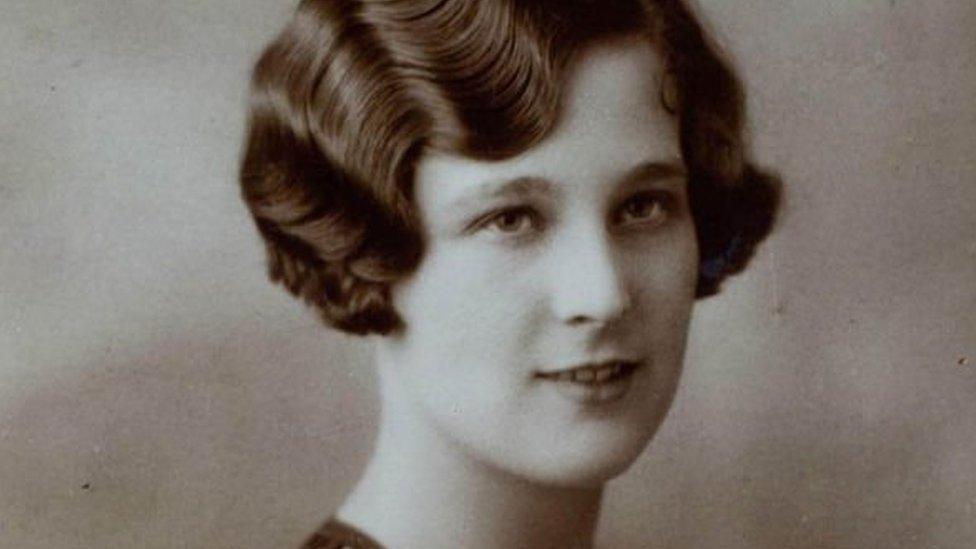Wartime memories of one of London's oldest women
- Published
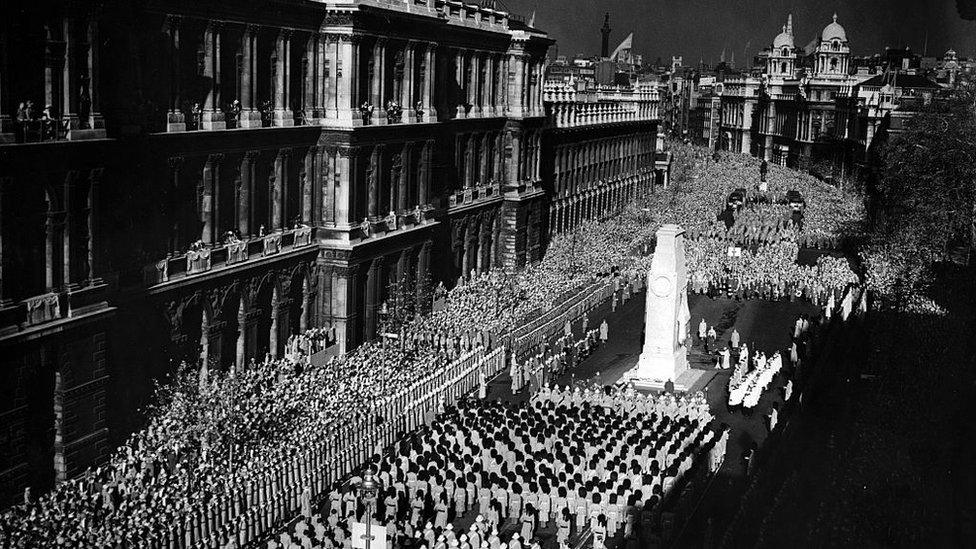
A Remembrance Sunday service at the Cenotaph in Whitehall, London, in 1945
About to turn 105, Ellen Haylor, one of London's oldest women, has seen war come and seen war go.
Mrs Haylor, from Barnes, is 30 years older than the NHS, was 11 when the Great Depression struck the USA and 13 when the first Tesco opened.
Born just two days after the end of World War One, she served on the Home Front throughout World War Two - and has now spoken to the BBC ahead of Remembrance Day.
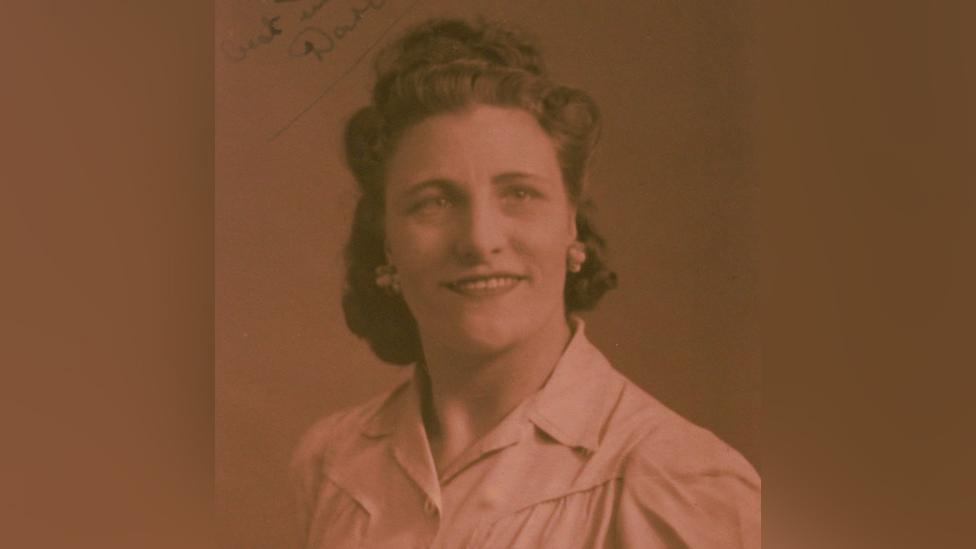
Ellen Haylor's husband was a veteran who fought in France during the World War One
As a living witness to the biggest and deadliest war in history, Mrs Haylor remembers the time Richmond-upon-Thames suffered one of its worst nights of destruction.
On 20 September 1940 an entire street - Peldon Avenue - was destroyed by bombs.
"They did an awful lot of damage there. There was a row of houses, like a cul-de-sac, and they knocked it all down and set it on fire," she said.
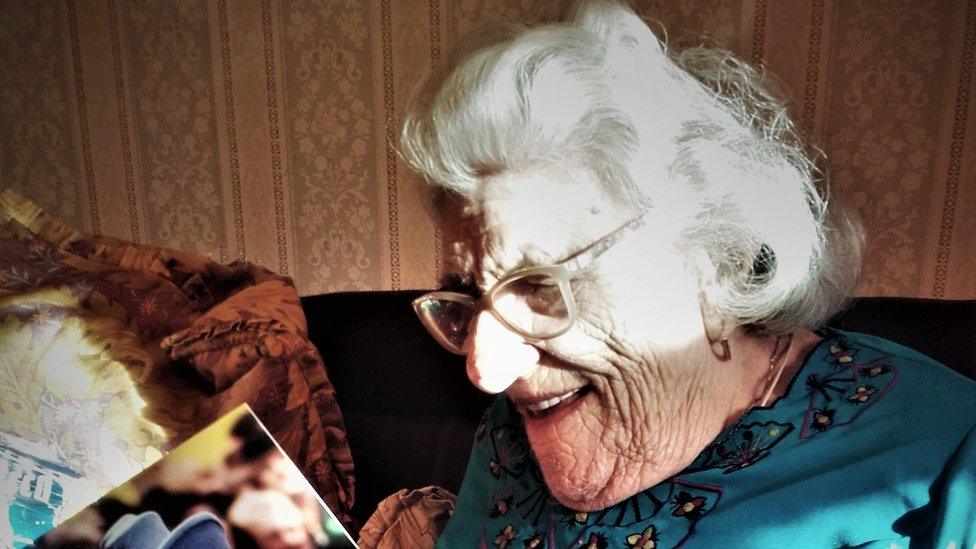
Mrs Haylor served on the Home Front throughout World War Two
"They had flying bombs that had a flame attached in the back and made a noise in the sky.
"When the noise stopped, it came straight down and set fire to everything. We had one land at the top of our road, over Clifford Avenue Railway Bridge, and we were evacuated at around eleven at night.
"The funny thing was, we had to walk past where it was on the opposite side of the road. The bomb disposal people tried to defuse it. I remember it started ticking and eventually exploded."
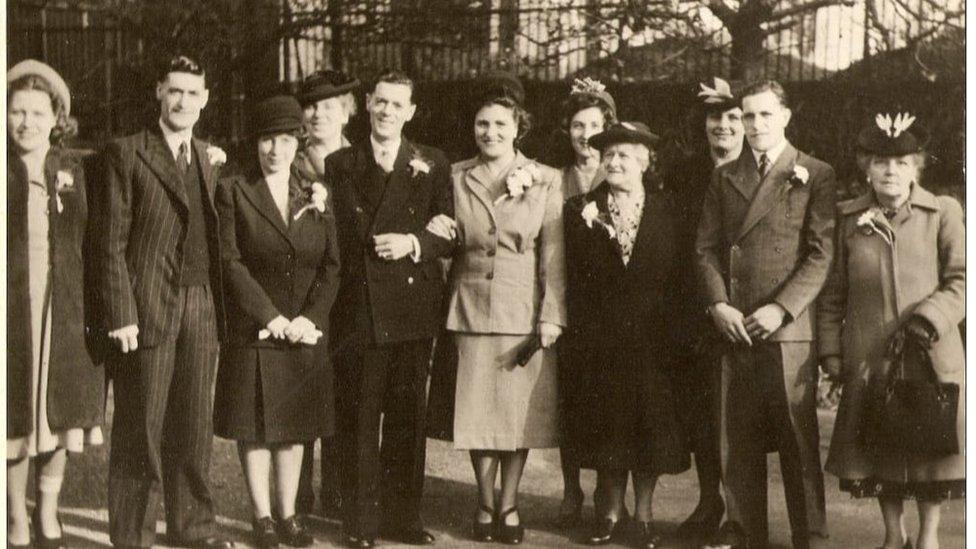
Mrs Haylor pictured in a family wedding photograph
Mrs Haylor worked as an outdoor caterer for J Lyons & Co, a restaurant chain store, until war broke out in September 1939. She was redeployed to the tea shops where she helped ration of food.
"The manager would only allow us to issue out a certain portion of goods every day.
"I'd keep stock of what was left in the fridge and office and order more when it was running out. That's what I did during the war."
Mrs Haylor said other than the tragedies everyone suffered, she enjoyed the sense of togetherness in British communities.
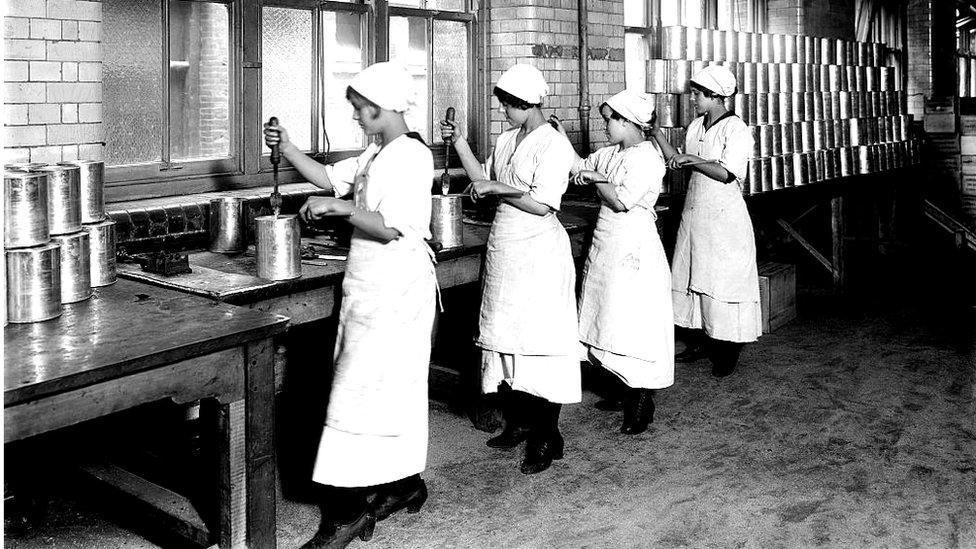
J Lyons & Co Ltd food factory, Hammersmith Road, London, October 1918. Mrs Haylor would later work for the firm in the next war
"Although we didn't have much in terms of entertainment, we made our own. The worst part of it was the rationing, we didn't get a lot of food - we used to get about two ounces of butter weekly.
"We survived on plain English cooking, like steak and kidney pudding, pies and roasted meat.
"Growing up, I used to play outside, but there were a lot of restrictions, cinemas were closed. We had a very large garden where dad grew all our vegetables. We had apple trees and a plum tree, although it never bore any plums at all - just leaves."

Mrs Haylor and her husband Jack met at the Hammersmith Palais de Danse
Her husband Fred Haylor was a veteran who fought in France during the World War One before becoming a driver for the Canadian Military in World War Two.
The couple met at a dance at the Hammersmith Palais de Danse, an entertainment venue in London that operated from 1919 until 2007.
"When the dance was over, he asked if he could see me home to Richmond. When he left, he said could I be his penfriend."

Listen to the best of BBC Radio London on Sounds and follow BBC London on Facebook, external, X, external and Instagram, external. Send your story ideas to hello.bbclondon@bbc.co.uk
Related topics
- Published29 March 2020
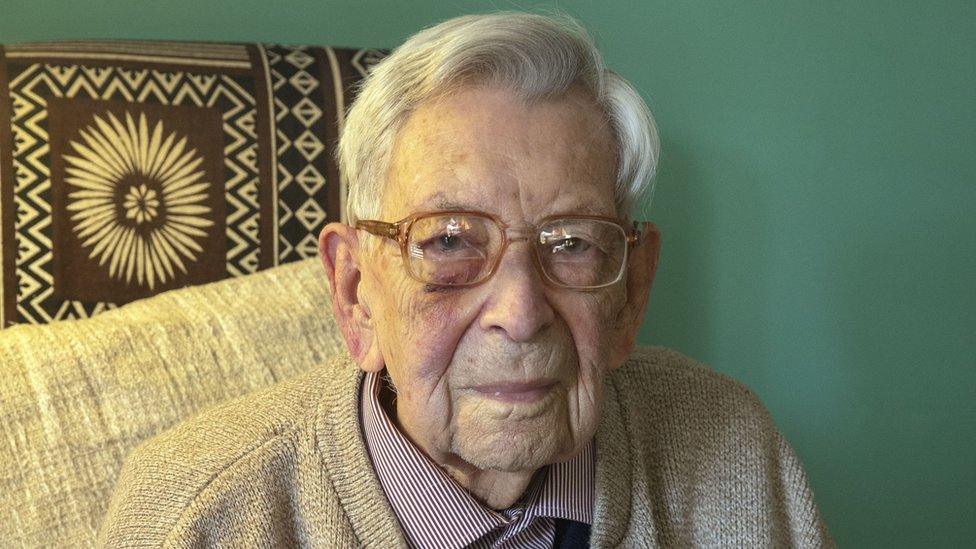
- Published16 September 2018
